This article was medically reviewed by Jonas DeMuro, MD. Dr. DeMuro is a board certified Pediatric Critical Care Surgeon in New York. He received his MD from Stony Brook University School of Medicine in 1996. He completed his fellowship in Surgical Critical Care at North Shore-Long Island Jewish Health System and was a previous American College of Surgeons (ACS) Fellow.
There are 17 references cited in this article, which can be found at the bottom of the page.
This article has been viewed 54,943 times.
Experts agree that you need immediate medical care for a lower leg fracture, so see a doctor right away if you think your leg is broken.[1] However, you may need to splint the leg if the break happens when you're not near medical help, such as when you're camping or hiking. Research suggests that a splint can immobilize your leg, which will help stabilize the fracture and reduce the risk of it getting worse.[2] After you splint the fracture, go to the doctor so you can start your road to recovery.
Steps
Applying Emergency First Aid
-
1Use scissors to remove clothing from the area. Excess clothing will get in the way of any treatment you need to do. You can also use some of the excess clothing to help stop the bleeding if you don’t have a lot of other materials to work with. If you don’t have scissors, you can use a knife, but make sure the blade is pointed away from both you and the victim.[3]
-
2Stop any bleeding. Before dealing with the fracture, you need to stop the bleeding, especially if it is profuse. Use a cloth and apply pressure to the wound. If you soak the cloth, apply more cloth on top of it. Don’t remove the cloth from the wound. To help slow the bleeding, raise the leg above the heart.[4]
- Make sure that you always wear gloves to prevent the spread of bloodborne pathogens. Wash or sanitize your hands first, and then put on gloves. Know that, if you choose to treat a bleeding person without gloves, you may expose yourself and that other person to one another's bloodborne diseases.[5]
Advertisement -
3Put ice on it. Make sure to wrap the ice in a cloth (a towel or some cotton clothing will do) before applying it to the break. Ice will reduce the swelling. It will also help to relieve some of the pain. If you have an ice pack, that works best with the least mess. You can also use a bag of frozen food, such as peas.[6]
-
4Clean the wound, if necessary. At this point, you should only clean the wound if the wound is heavily contaminated, superficial, or hospital care is delayed. While cleaning the wound is important to reduce the risk of infection, it is also important to stop the bleeding, which can be fatal a lot more quickly than an infection.[7]
Splinting the Leg
-
1Do not push in a broken bone or try to set the fracture. This is extremely important. Only a doctor should do this, as you could potentially sever an artery or cause nerve damage. Instead, simply try to immobilize the area rather than trying to manipulate it.[8]
-
2Place the splinting material parallel to the leg as gently as possible. You should pad the leg first with foam padding, a pillow, a blanket, or a piece of corrugated cardboard. Then, some solid, structured material should be used along the sides of the leg so it will not move. Hard cardboard or a a tent pole work well for this. The splint should extend from above the knee of the injured leg to just below the heel. This will offer maximum stability for the broken leg.[9] If you do not have a first-aid splint on hand, you can use any rigid objects such as sticks to make the splint.[10]
-
3Secure the splint with some kind of wrapping. Use cloth or wrapping tape to secure the splint. You can also use duct tape. Tie the splint above and below the injury, making sure to include the joint above and below in the splinting. This will help to stabilize the splint. Be careful not to wrap it too tight as this can cut off circulation.[11]
-
4Check for a pulse beneath the splint. If there isn’t, this likely means the splint is wrapped too tightly. Loosen the splint and check again. Circulation is incredibly important to maintain the health of the leg during splinting.[12]
-
5Make sure the splint fits comfortably on the leg. Avoiding points that are especially painful can help with this. Listen to the person you're splinting, as they will have a good idea of whether the splint is comfortable, and will let you know. If the splint is uncomfortable, unwrap it and reposition splint and perhaps wrap less tightly.[13]
Avoiding and Treating Shock
-
1Don’t move the leg any more than necessary. This is necessary to avoid causing any more damage or increasing pain. An increase of pain or damage can cause the patient to go into shock. So, make sure you keep the leg steady and still.[14]
-
2Check the area below the break. If it is swollen, turning pale, or becomes cool to the touch, there may be compromised vascular supply. The key thing is reestablishing vascular flow, which is best done at a hospital. For severe shock, you need medical attention, and there aren't a lot of things you can do in the wilderness. In any case, make sure the patient stays hydrated with water until help arrives, or until you can get them to the ER.[15]
-
3Try to raise the legs above the head if shock occurs. This will possibly help the blood flow to the heart.[16] While there are no studies that show the effects of leg elevation for shock, it might help. However, you should not elevate the legs if the injured person also has a head or abdominal injury. Also, you should not elevate an injured extremity because it will be painful and can worsen the injury.[17]
-
4Treat pain with mild pain relievers. Acetaminophen will usually work (assuming the injured person does not have an allergy or some other contraindication against the medicine).[18] Some studies suggest avoiding NSAIDs (non-steroidal anti-inflammatory drugs, such as ibuprofen or Advil) after a break, as they are thought to slow down the healing process of fractures and may also increase bleeding.[19] [20]
Warnings
- Regardless of what the injured says about medical care, take them immediately to the hospital. A splint is not good enough to heal a fracture. It only works to stabilize it.⧼thumbs_response⧽
- This article is not meant to replace the advice of a qualified medical professional.⧼thumbs_response⧽
Things You'll Need
- Splint materials, such as belts, ropes, cardboard, sleeping bags or bandages
- Cardboard or other sturdy material
- Masking tape, string or rope
References
- ↑ https://www.childrenshospital.org/conditions/broken-tibia-fibula-shin-bone-calf
- ↑ https://www.nhs.uk/conditions/broken-leg/
- ↑ https://kidshealth.org/en/teens/broken-bones-first-aid.html
- ↑ https://www.moh.gov.sa/en/HealthAwareness/EducationalContent/Firstaid/Pages/007.aspx
- ↑ https://www.nhsinform.scot/tests-and-treatments/emergencies/first-aid
- ↑ https://raisingchildren.net.au/toddlers/safety/cpr-first-aid/ricer-first-aid
- ↑ https://www.sja.org.uk/get-advice/first-aid-advice/bones-and-muscle-injuries/broken-bones-and-fractures/
- ↑ https://kidshealth.org/en/teens/broken-bones-first-aid.html
- ↑ https://www.healthywa.wa.gov.au/Articles/F_I/First-aid-for-fractures-and-dislocations
- ↑ https://kidshealth.org/en/teens/broken-bones-first-aid.html
- ↑ https://www.fairview.org/Patient-Education/Articles/English/f/i/r/s/t/First_Aid_Sprains_and_Fractures_83420
- ↑ https://www.nhs.uk/common-health-questions/accidents-first-aid-and-treatments/how-do-i-apply-a-bandage/
- ↑ https://www.globalfirstaidcentre.org/fractures-sprains-and-strains/?pdf=19486
- ↑ https://www.pennmedicine.org/for-patients-and-visitors/patient-information/conditions-treated-a-to-z/bone-fractures
- ↑ https://www.pennmedicine.org/for-patients-and-visitors/patient-information/conditions-treated-a-to-z/bone-fractures
- ↑ http://neuron.mefst.hr/docs/katedre/klinicke_vjestine/Dr%20Lojpurr%20FIRST%20AID%20TO%20THE%20INJURED.pdf
- ↑ https://cpr.heart.org/en/resuscitation-science/first-aid-guidelines/first-aid
- ↑ https://www.seattlechildrens.org/conditions/a-z/leg-injury/
- ↑ http://www.ncbi.nlm.nih.gov/pmc/articles/PMC3259713/
- ↑ http://my.clevelandclinic.org/health/drugs_devices_supplements/hic_Non-Steroidal_Anti-Inflammatory_Medicines_NSAIDs
About This Article
If you or someone you’re with has fractured a leg, call emergency services or go to the emergency room right away. While you’re waiting for help, use scissors or a knife to cut off the pants leg or any other clothing covering the fracture. If the fracture site is bleeding, apply pressure with a clean cloth until the bleeding stops and elevate the leg above heart level. You should also put an ice pack on the affected area to reduce swelling. Don’t try to set the fracture yourself, since this could cause more damage. Once you’ve provided first aid, wrap the leg with a soft material such as foam padding or a blanket. Then, place something hard along the side of the leg from knee to ankle, such as a piece of hard cardboard or a tent pole. Secure the splint with a strip of cloth or some packaging tape, making sure to cover the joints above and below the ends of the splint. Finally, check under the splint for a pulse to make sure it’s not tight enough to cut of the circulation, and loosen it if necessary. For more advice from our Medical co-author, including how to prevent and treat shock, keep reading!
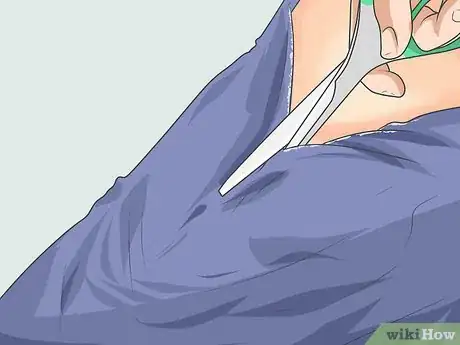
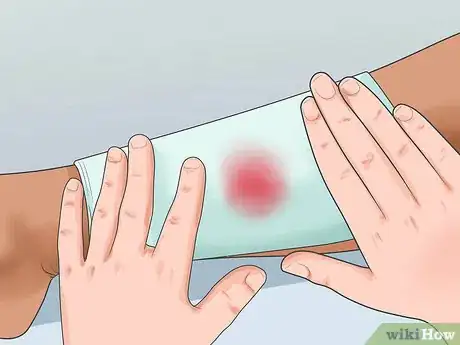
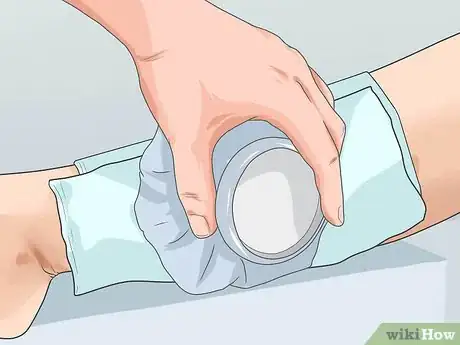
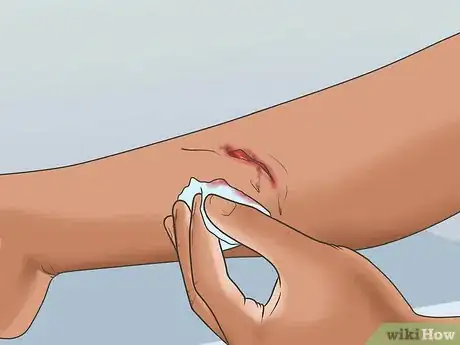
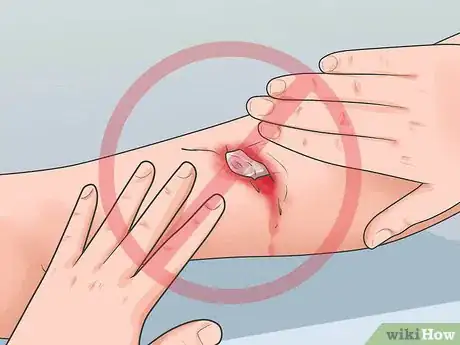
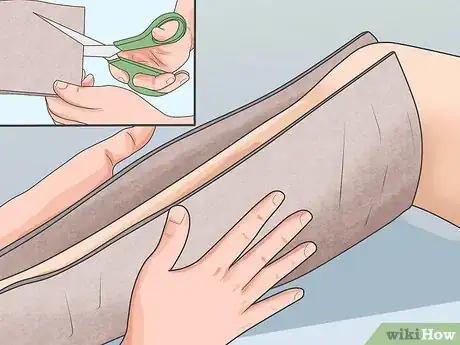
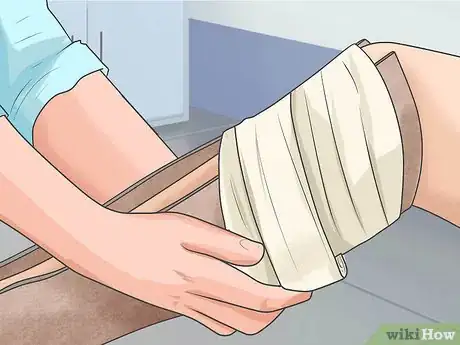
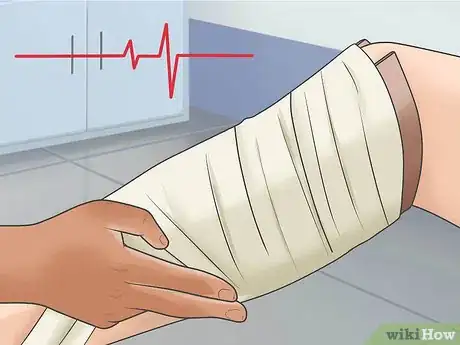

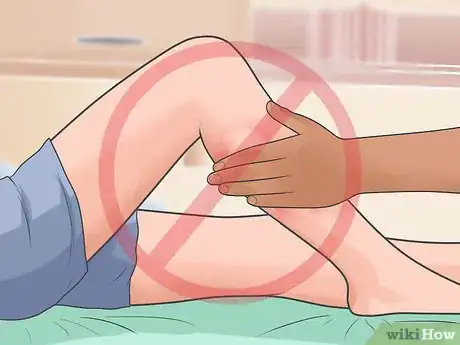
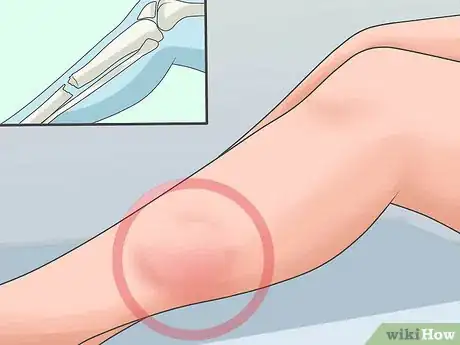
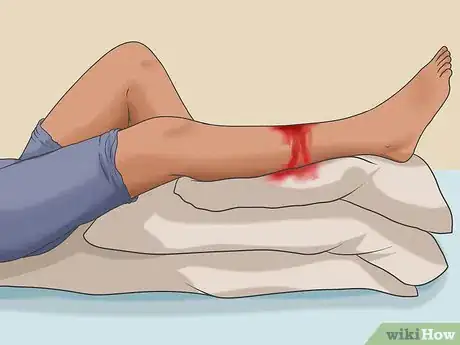
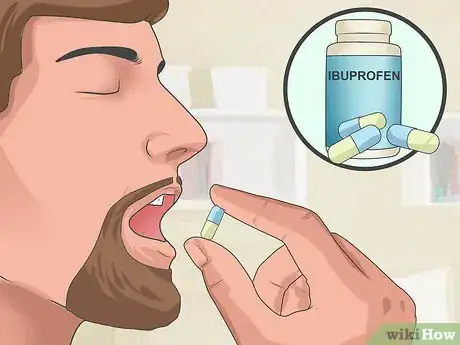

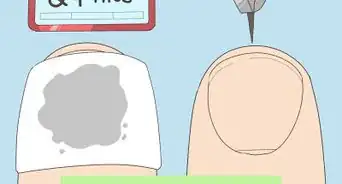
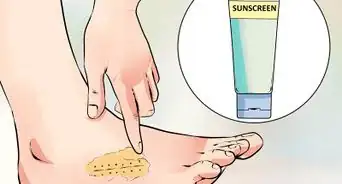

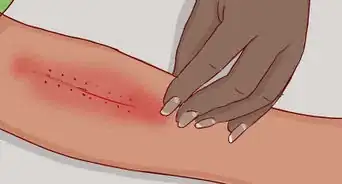
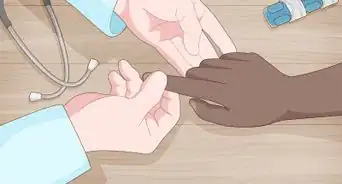
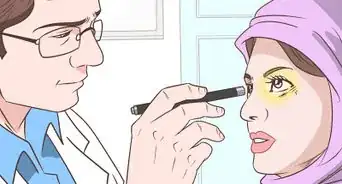

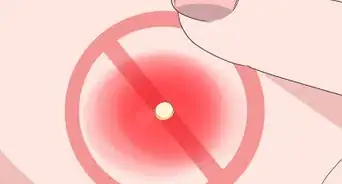

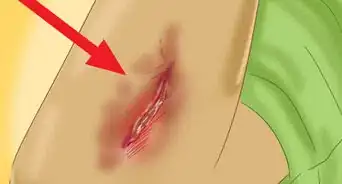
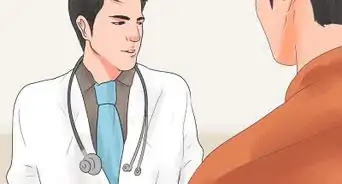









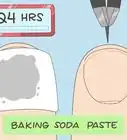
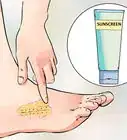





































Medical Disclaimer
The content of this article is not intended to be a substitute for professional medical advice, examination, diagnosis, or treatment. You should always contact your doctor or other qualified healthcare professional before starting, changing, or stopping any kind of health treatment.
Read More...